Ecology and Design for Houston’s Memorial Park Nelson Byrd Woltz Landscape Architects
Not too long ago, native aggressive yaupon holly thickly overgrew soggy ground in the Eastern Glades area of Memorial Park in Houston, Texas. What seemed to be a thousand mosquitoes lay in wait for the unwary. A serene and beautiful wetland, created by a geological fault line, was disrupted by desire line paths (unplanned, from repeated use) following the old roadways of Camp Logan, a World War I training camp. The Glades—clearings in the forest from tree mortality after Hurricane Ike and the subsequent drought—offered moments of relief from the oppressive weight of dense vegetation.
But a very different experience now awaits the visitor, brought to fruition by the staff at Nelson Byrd Woltz Landscape Architects (NBW). Through years of planning and work with various partners, NBW introduced a vibrant new feel to the Eastern Glades. Distinct, expanded neighborhood paths invite visitors in. Once inside, a feeling of immersion in wetland quiet is unaccompanied by hordes of mosquitos and persistently wet feet. With most of the yaupon and tallow trees gone, the Glades offer a sense of open airiness among oaks and towering pines.
The largest transformation is perhaps the 5.5-acre lake, where a vista opening to the west presents ever-varying encounters of sunsets and the movement of air and light across the water. The lake edge, accessible by boardwalk and two central terraces, is benched to create a zone of shallow water for planting. This zone is shaded by swamp lily, swamp milkweed, Texas spider lily, water hyssop, maidencane, and lizard’s tail—perfect habitat for frogs, hatchling fish, and the wading birds that prey on them. The lake has become a theater of nature that draws people in and connects them to what is real and observable—and often quite beautiful.
Implementation of this 100-acre project took place in two stages. To begin, East Memorial Loop was shifted to move the roadway closer to the edge of the park, opening an area for recreation, restoration of park ecologies, and storm water management. This was followed by construction of the glades, the lake, the boardwalks, and various amenities. Despite COVID-19 limiting NBW team travel from one of their central offices in Charlottesville, Virginia to their field office in Houston, the project was finalized in 2020 and opened to an excited public. With a happy client and an effusive public, NWBLA Senior Associate Jeff Aten rates this first major project of the Memorial Park Master Plan a success. “There is nothing quite so rewarding as seeing a place used in ways we imagined and in ways we could not have imagined, by people who seem genuinely thrilled.”
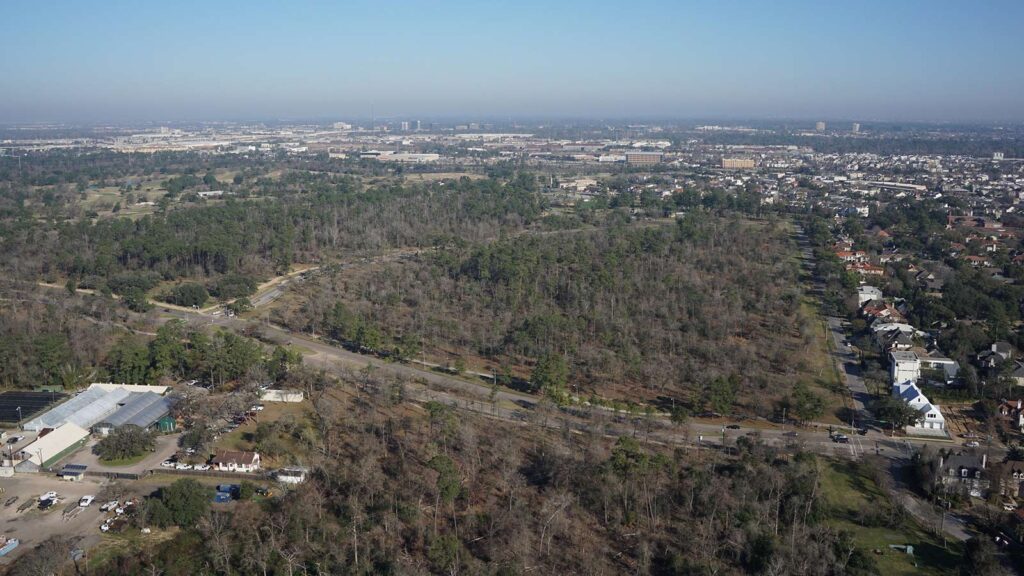
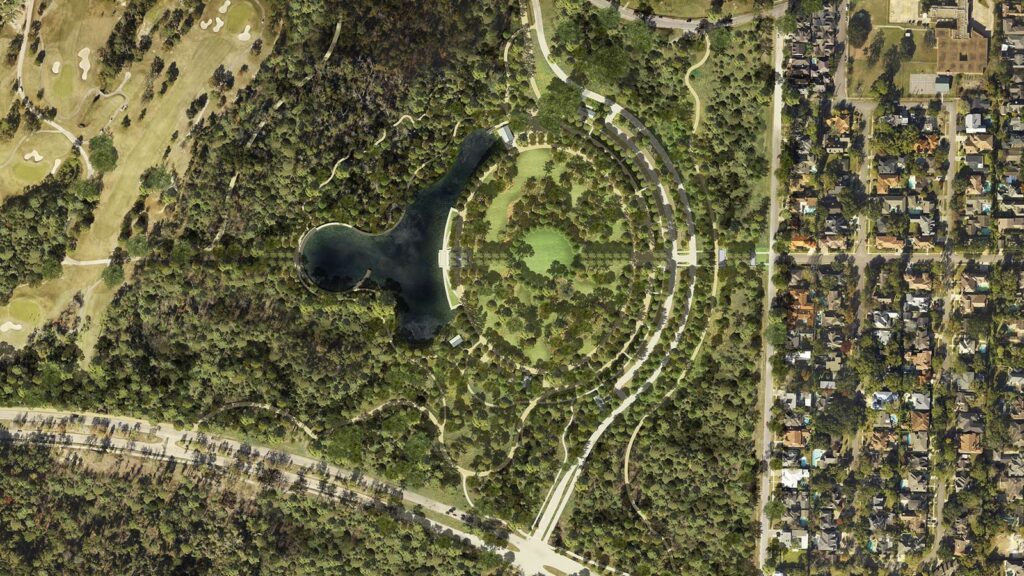
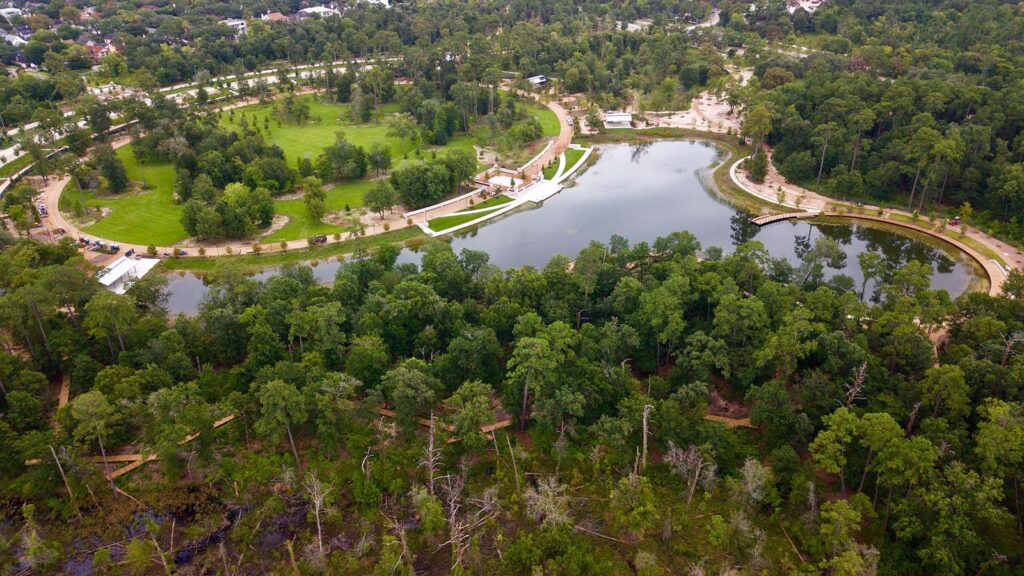
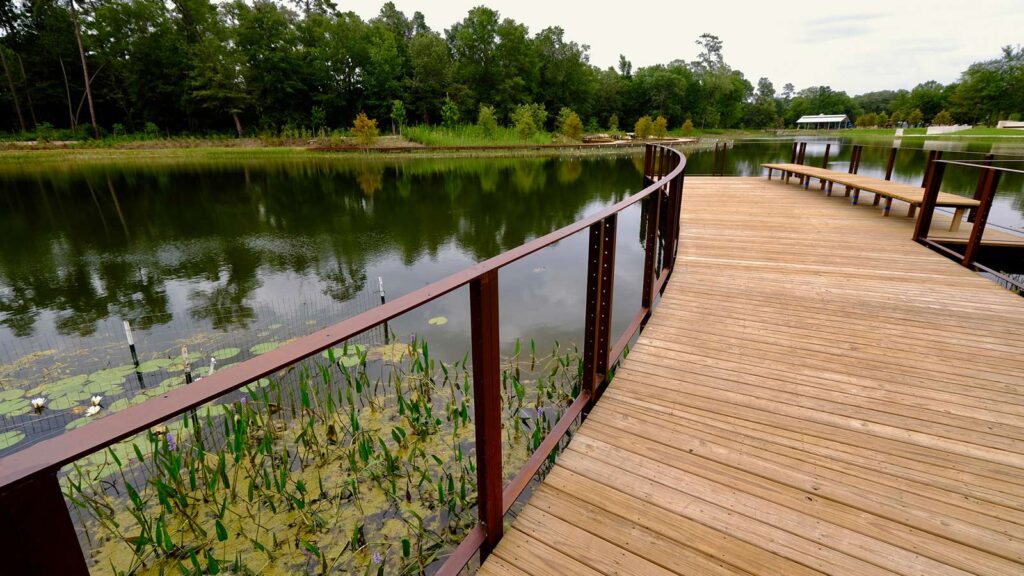
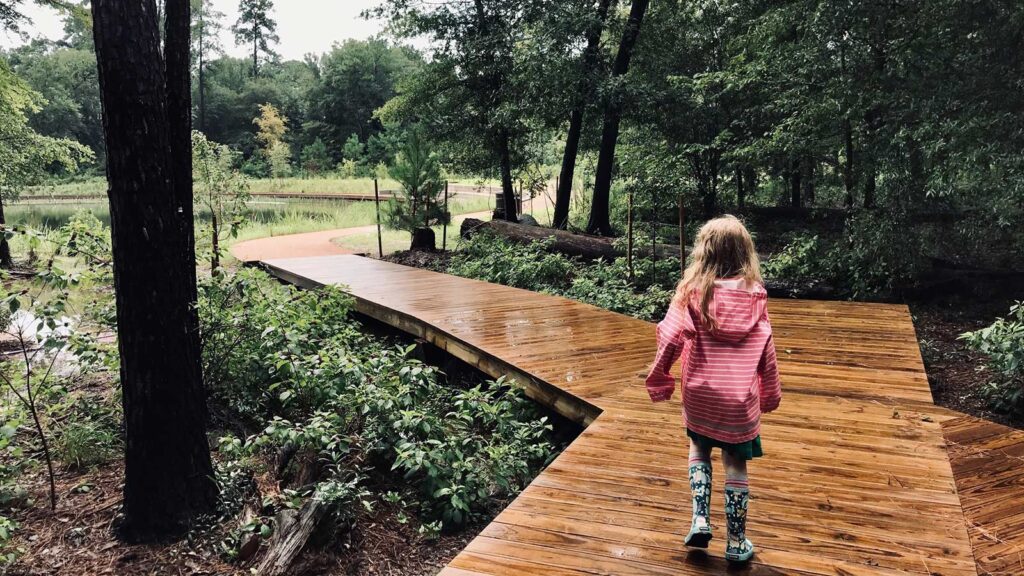
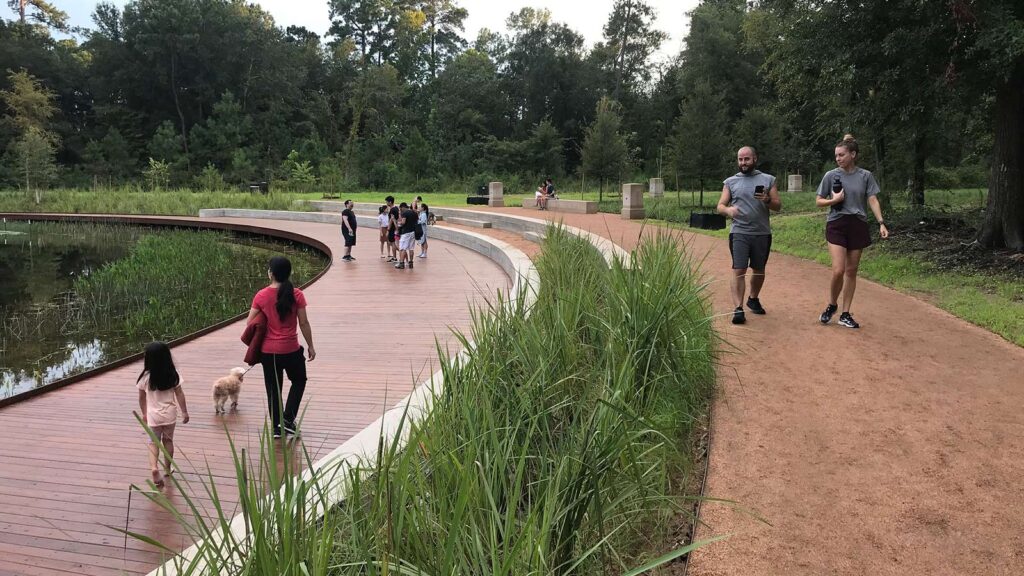
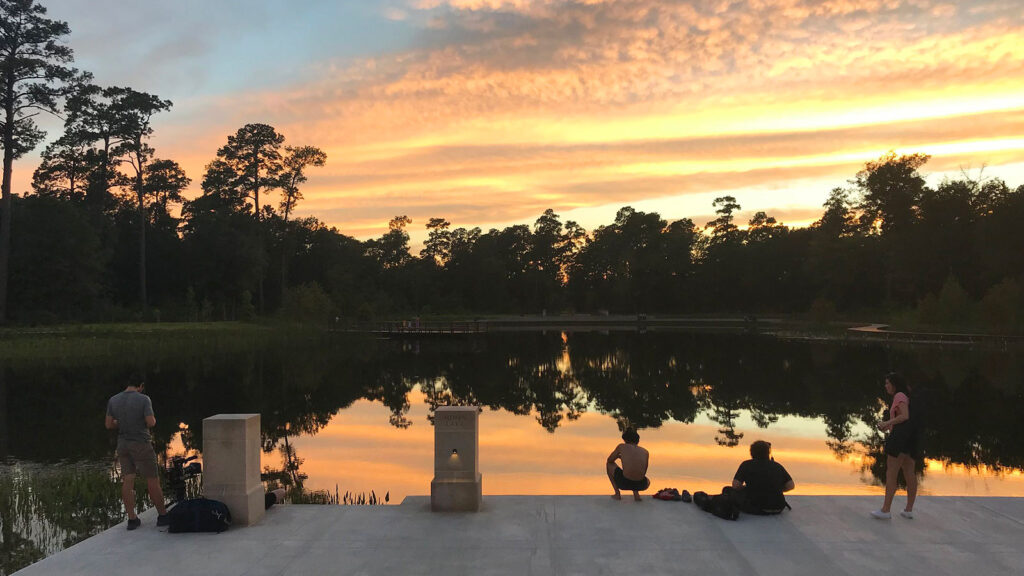
The project meets all of the guiding tenets of the master plan: to restore, consolidate, tend, reconnect, and enhance. Restoration is achieved with the creation of adaptive systems, such as bioretention and runoff capture, and implementation of a savannah ecology in the Glades’ islands of preserved vegetation. A shift in circulation orchestrated with the road redesign and creation of new social opportunities fall within the task of consolidation. The parklands are tended and enhanced through a number of project elements, including strengthening Houstonians’ connection to cultural assets such as Camp Logan history and improving a beloved 3 mile running loop. Linking storm water systems and providing an accessible entrance at Blossom Street build on the principle of reconnection.
At NBW, the landscape architects embrace a variety of projects at a variety of scales. A private or institutional garden design might include an existing or proposed building that would dictate certain constraints. But for the Memorial Park Eastern Glades, the landscape comes first and always will. As Jeff puts it, “The ecology, the cultural history, and the way in which the human visitor interacts with those elements lends richness to the push and pull of constraint and opportunity. This means the constraints have more to do with soils, sunlight, water, capacity, access, and maintenance, and less to do with how the landscape might ‘serve’ the building; and the opportunities have to do with how to find what is beautiful and essential and either preserve it or enhance it so that it becomes visible and apparent.”
The beauty of the elements, although central, is not the only message conveyed by the Eastern Glades. Visitors encounter conservation messaging in both interpretive signage and design. Signs throughout the project explain restoration work on native woodland islands between the glades and the Memorial Park Conservancy’s work to establish healthy forests and savannahs. Conservation and stewardship of the park’s resources are also reflected in the capture of runoff from parking lot and roadway in a series of low-slope bioretention channels that feed into the lake. Stored water can be drawn down to irrigate the lawns and native landscape of the Eastern Glades. This captured rainwater offsets millions of gallons of potable water that would otherwise come from the City of Houston.
No one person that can take credit for the design, construction, or funding of this project. It takes an incredible number of people working together to make something so amazing. Jeff Aten muses, “I think my favorite part [of the project] is reflecting on the collective that made this possible.” The Memorial Park Conservancy, the Kinder Foundation, the Uptown Development Authority, and the City of Houston all provided expertise, fund-raising, management, and input essential to making this project a reality. An outstanding group of volunteers formed an advisory EcoTech panel to support the Master Plan development, providing feedback on ideas about restoring various ecologies, the cultural and ecological history of the site, and management of various proposals through time. Soil scientists, ecologists, archaeologists, and engineers on the NBW team did deep dives into their focus areas. Everyone played a fundamental role in moving this project from master plan to concept design to implementation. It was through collaboration and commitment to design excellence that all of this was made possible.
This incredible group is moving on to implement more of the Memorial Park master plan. The Land Bridge and Prairie project is now under construction, with earthwork underway and precast tunnel sections ready for setting toward the end of this month. With the success of the Eastern Glades, NBW is eager to do their part to update this impressive park for Houston.
Adapting Design
Extensive research went into developing the Master Plan for Memorial Park. Yet all the information needed for a final design may not be available during the design phase. It is after the contract is awarded and underbrush and invasive species are removed that one can really see what assets are available to work with. An openness on the part of the client and the designer are essential to let the design evolve with the receipt of new information. When the client is interested, the designer sees possibilities, and funds are available to expand or evolve scope, amazing things can happen during the construction administration phase of a project. In the Glades, a tree inventory of areas adjacent to the fault line and wetland allowed for such an evolution of design. The original concept of a path at grade through this area shifted to that of a boardwalk—less tied to the ground and more easily able to handle fallen snags or low wet areas. The boardwalk now allows for an immersive experience of the wetland area without undue impact on the ground plane of this unique habitat.